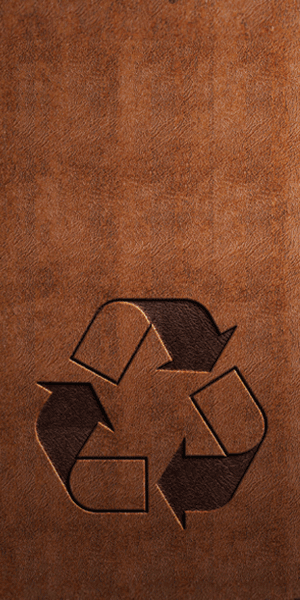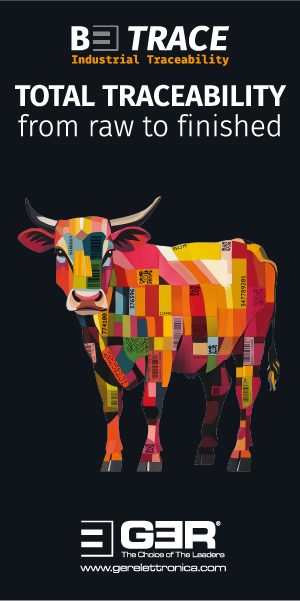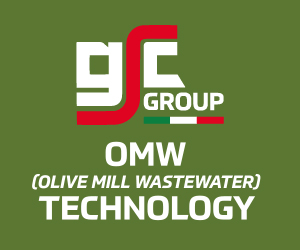Market Intelligence - 19.01.21
Macroeconomics
The story of the past weeks was certainly the storm on Capitol Hill as a final exclamation mark on a presidency like none the US had experienced before. There is a lot work to be done to restore the strong US values that have been an anchor for so many countries. Looking at the reactions of ‘competitors’, there was a display of glee and raised the question of ‘cui bono?’.
Anyone looking at the Western world from a neutral perspective has to notice more fragmentation than ever before. The UK leaving the EU, the EU also seriously split south to north as well as part of east and west, the US losing a lot of its unity, Turkey as a NATO member going its own way and more that suits those who can benefit from such trends.
This is even discussed in China, for example, where the recent incidents are openly recorded and mentioned as the sign of weakness of the Western democracies. Although it’s not really commented on in Russia, one can feel a similar sentiment among the leaders there as well.
Looking back over the last few years and noticing what has happened in the Middle East, in Hong Kong, in the South China Sea and in Africa, it is obvious that the weights on a global scale have already shifted. The history books will tell us some time in the future if it all meant anything.
For the short term, the public is now focusing on the inauguration of the new US president and wondering if rioters will resume their actions.
The financial markets remained quite unimpressed by the dramatic pictures. That’s the good news, because the markets normally have a very good and reliable feel for the situation. Until now China has dragged the global economy along and, in part, even out of the problems related to the coronavirus. Several new outbreaks in China and lockdowns in several provinces have led to the question of a risk of repeating last year’s cycle. However, in general, there is far more confidence in the strength and rigid action taken by the Chinese government, in particular when we consider the upcoming Chinese New Year holidays (from February 12). They will do everything needed to stop the spread of the virus in the country before people start to move around. If this is not possible, then we know that political leaders will not refrain from locking people in and stop them from travelling.
In the rest of the world, the number-one headline is about vaccines. The number of doses and the number of people vaccinated are published every day, with some countries taking a quick lead and others lagging behind. Realistically we can expect it to be the summer before any real effect of the vaccinations becomes clear.
Looking at commodity prices we have to realise that the markets take a positive view of the trends in 2021. Most commodity prices, such as metals but also oil, have risen quite significantly over the past months and continue to do so.
Inflation continues to be no issue, at last according to the experts. Commodity prices are up, energy prices are up, transport charges are up and production costs are not helping either, with companies suffering from lower productivity and extra charges from the pandemic. This is the type of combination that normally brings higher prices. It may not come super-fast owing to the subdued consumer market, but we would not be surprised to see prices quickly rising later in the year.
The US dollar has recovered a little from its recent very soft trend. This is related to the expectation of higher inflation as well as better-yielding US dollar investments versus other major currencies. Gold saw a short moment of weakness, but recovered quickly. The investment story of the first weeks of 2021 was bitcoin, which rocketed up to more than $40,000 before settling a little back into the mid-30s. With the support of some big global investors, the crypto currency is gaining more respect and many consider the crypto currency is a better option to protect against inflation and potential financial turmoil than, for example, the classical investment into gold. Pessimists are still putting a lot of question-marks behind the validity of artificial currencies and predict a final collapse in the value. It is certainly one of the hottest items for discussion at the moment.
Even if it’s a completely different field, one should remember also what people thought when Elon Musk began to build cars. Even today, nobody knows if his company, Tesla, will ever be successful enough to justify its present market valuation, something that is similar to the valuation of the crypto currencies.
Leather Pipeline
The year is still young, but the leather pipeline has had a pretty bumpy start. Returning from the Christmas break, most players had a pretty comfortable feeling about the situation. From the sellers’ point of view, steady demand and interest from China after a buoyant last quarter meant the outlook for the first quarter was comfortable. There was no indication of sudden disruption, there were reasonable sales positions and a stable receipt of deposits and letters of credit. This created a comfortable feel and wiped away concerns about shipping problems and the possible negative effects of the pandemic in Europe and the US.
It just needed two working days to see first cracks in the wall of comfort. What began as rumours turned quickly into facts. China saw a rising number of infections and they were, unfortunately, concentrated in the province of Hebei. This is close to Beijing and also the location of several major leather manufacturing centres. These were the main driver of good demand for hides and of the good performance of the upholstery leather market in China. The mood of people can switch quickly.
The government took immediate action with lockdowns and mass-testing. At first, the lockdown was ordered for seven-10 days and factories closed. In the beginning, Chinese sources were still convinced that it would be under control well before the holiday and shut down for Chinese New Year (February 12). However, it has become obvious that there may be too little time for this. Lockdowns have become stricter, transport is hindered and slowly tanners have begun to plan for a shutdown that will last until it’s time for the holiday. Banks and logistics have gone into lockdown as well.
Some people might have a feeling of déjà-vu: it all looks like a carbon copy of last year, although we are a year further forward and know what we are dealing with and what has to be done. In addition, we have vaccines and nobody believes this year will be a repetition of 2020. However, last year, in February, the pandemic was a Chinese affair and Europe was still in full gear and thought this was too far away to bother about. This January the situation is the opposite. Despite smaller outbreaks and clusters, people in China are the ones who feel safe and protected. They appreciate the actions and measures their government has taken and believe that these are working. All of this is supported by state-controlled media and the government information system. And it works.
In most of the western world the situation is different. The pandemic still dominates, government actions are not as effective and the actions taken are perceived as not having had any immediate successful effect. This has led to a spiral of easing and tightening and the feel of a lack of competence, leadership and effectiveness among politicians.
This has contributed to the present sentiment in the leather pipeline. Nobody is interested in anything risky at this time. Everybody knows what this could mean for business and pending contracts. However, unless the government in China lifts restrictions soon, it will certainly send shockwaves around. The most obvious thing is reduced production, demand and need to buy. However, the side effects on logistics and finance would also be really worrying. If banks are closed, money transactions are paralysed, which means letters of credit and deposits cannot be arranged and payments for containers on arrival will be hit.
In Europe the worries are bigger. Some weeks ago hopes were running high of light at end of the tunnel. Vaccines were approved and schedules were planned. Lockdowns were light and some kind of normal life, at least in most factories and offices, was still possible. With the rising number of cases and new mutations of the virus spreading quickly, the calls for extra-tight lockdowns are rising and we have to be realistic. It will come sooner rather than later. Following discussions and what began to circulate in the media at the end of last week, one has to expect that most of Europe will be sent back into a much tighter lockdown until infection rates reduce.
If this happens we have to assume that factory activity will be hit as well, either because leather will be regarded as non-essential production or because not enough staff will be able to come to work. This is not the only threat. Global supply chains are already at risk for various reasons. In particular computer chips seem to be a problem and various sources are warning that production could come to a halt very soon. One computer chip plant in Germany has already announced production stoppages due to insufficient sales and supply interruptions; others are running their lines more slowly or with interruptions. Managers expect the problem to last for six or even nine months, until the pipeline is adequately refilled. This is a very dangerous cocktail for industrial production in general and it could affect the leather pipeline too.
The trade should be aware of how quickly sentiments can change and how much the raw material markets depend on the market in China. The Chinese make the market or kill it. In the past months business has, fortunately, been driven by the successful handling of the pandemic in China. The Chinese consumer market recovered quickly, financial stimulus offered the necessary liquidity and Chinese factories received good orders, thriving on positive local demand. This was added by a recovering confidence globally with normalising business activity in other parts of the world too.
In the leather pipeline this was concentrated on upholstery and automotive, reflected in a strong recovery of raw material prices. Inventories have shifted down the pipeline from raw to finished. With rising prices, confidence rises too and owners of inventory feel comfortable with what they have in their possession. What we do not know is the real balance between inventory and demand for finished product and if this is in balance with the levels of confidence. In short: If manufacturers in China have replenished their stocks by more than the orders they have received, and did this based on confidence, this might have been good news in the past, but is something to watch out for in the future.
Chinese business is based far less on just-in-time systems than we are used to in Europe, for example. And something that is adding to the need for careful study of the situation is the significant volume of outstanding shipments due to the shortage of container equipment. We have a delayed and decreased product flow, which could quickly influence the market as well. So, there is a lot to watch out for and we still don’t feel that raw material sellers should jump to any conclusions before the picture clears after the Chinese New Year holiday.
We do not have too much news from the split market. It is following the hide market, with a certain delay. Purchases and shipments of cheap material and contracts are running well, but the question is what happens next. From the shoe industry we will know more about their material decisions in the coming weeks. We will also learn more about the plans of brands and retailers for the rest of 2021. Confidence or fear? We tend to believe that retailers outside China have reduced their inventories by selling ‘ex stock’ and not really reordering adequately. This could trigger more demand, but leather shoes need so much lead-time that quick needs are better served with non-leather articles. However let us hope for greater confidence so that the order flow reaches leather shoe manufacturers too.
The skins market is showing the first signs of life again. Apart from the niches, such as particular fine wool skins, selected high-quality nappas and specialties for interior design, the market was dead with prices below any realistic revenue for processing and transport. This was remarkable when we think about the rebound of bovine hides and the possible options for sheep leather to replace bovine in shoe, bags and leathergoods.
Our sources report a rising number of enquiries. Sure, there are still many bargain hunters around who want still to find the cheapest of the cheap. However, they are beginning to realise that the time of the endless supply of existing stocks at sell-off prices is ending. At the same time, we are beginning to hear about growing interest from brands in using leather again.
In the fashion garment sector leather garments, mainly in women’s fashion, can be seen all over. Jackets, skirts and pants are turning up on TV and in movies, but have not yet spilled into mass-market fashion. It is now the time for designers and product managers, as well marketing departments, to plan for next autumn-winter season. The consumer is ready: let us hope that the supply chain will be too.
The next weeks will become indicative for the rest of the first quarter. Vaccines, infections, supply chain issues, transport, politics, consumer reaction and retail conditions have become a daily surprise. We think that psychology can affect the leather pipeline more than other fields. The dominance of the Chinese market is always dangerous and with the upcoming Chinese New Year holiday, it is likely that the industry there will play for time now.












